-
Posts
809 -
Joined
-
Last visited
Content Type
Profiles
Forums
Blogs
Gallery
Events
Store
Posts posted by Yankee
-
-
Hi Red Eagle
Nice to see an old friend, a beautiful orginal in the scarce 2nd model. Thanks for sharing
 Enjoy
EnjoyYankee
0 -
-
Dear Yankee:
Remember too, that in W?rttemberg the custom of wearing triangular ribbons was popular too. So, basically the Austrian-style was at times popular in the southern German States.
You are right about the red-tint gold. The earlier badges were of higher content gold alloy. Usually, at least 750 gold (750/1000 or 75% if you will). The red colour was made by alloying copper with the gold resulting in a reddish/pink color. This is commonly known as "rose gold". Order jewelers sometimes used yellow gold and rose gold for different parts of the same order badge to provide a beautiful contrast.
Hallmarks on any SEHO badges are unusual in my experience (however limited). Rod's Knight 2nd w/ swords is the only piece that I have record of being marked. I own a gold Commander's grade badge from the mid-19th century and it has no markings, and my Knight 1st in gold from the late 19th century has no markings either. Of course, most stars (jewels) were marked. Good deduction on your part regarding markings on badges. The official Order Jewelers for Prussian, Bavarian, and Saxon Orders at least usually marked their pieces, whereas the smaller States did not as often.
I have never owned or held for inspection any 1st type gold badges, but I do not recall ever seeing markings listed when these pieces come up for auction.
Best regards,
"SPM"
Hi Schie
I have noticed on some of the German State Orders more then one color gold being applied to the badges. I was never sure it was done on purpose but as you say it sure makes a "beautiful contrast" so now I know never an accident. A fantastic example is the Oldenburg House Order Peter Friedrich Louis where the cross is one color and the crown another. Many examples too are the swords. I think Russia was the largest user of pink gold, nearly all their older orders have that and it is a marvel to see. I will scan an old picture of a early SEHO Knight that was at auction. I make big mistake not trying to bid on it
 as you can see it is a beautiful example in that dark red color. Thanks a bunch for your insight on the gold content.
as you can see it is a beautiful example in that dark red color. Thanks a bunch for your insight on the gold content.Sincerely
Yankee
0 -
Wow, I really like how this thread has expanded, although it makes my initial thoughts seem pedestrain. Basically, I initiated this thread to ask for comment on the SEHOs on the eMedals site in terms of quality of manufacture, period of manufacture, and suitability of price. I'm not certain the last question is appropriate in this forum, so please strike if not. I am of the mind to acquire one so comments are appreciated.
Rod, great piece! Schie, yes, 10 and 4, thanks. Keep Posting

Hi Michael
We did get a bit off topic, try to correct it. The two gold Seho's that emedals has seem nice, they are 2nd model, knight 1st class. If a choice always buy the one in better condition. Normally ones with swords are more sought after except Bavaria MVO. Purchase a Jorg Nimmergut price guide book, to get a ball park figure. Better to get a 2nd opinion, no expert on the Saxon Duchies. Good luck
Sincerely
Yankee
0 -
Dear Yankee:
Thank you for the scans of your wonderful Knight 2nd Class badge. It is definately a German-made piece in my opinion. It is of superb quality. The ribbon is a typical Saxon-style tri-fold (also the ONLY way that Austrians wore their awards). The Saxons often utilized this style of wear, but not always. The ribbon of course is an old silk original. A perfect piece!
The case looks Austrian to me, but for which award and which manufacturer, is anyone's guess. I do not believe that they really go together. Does the badge fit in the nest properly?
Best regards,
"SPM"
Hi Schie
Many many thanks pointing to country of origin, with that case it threw me a loop. I noticed the Bavarians too like having trifold ribbons perhaps copying the Austrian style but it was not consistent. I guess it was up to the individual wearer how he choose his style of ribbon mounting. Actually the order fits rather well inside, ribbon does reach the edge ( if I extend it ) I have two other Rothe cases also with gold emboss crowns, that are foreign awards but the inside lids are marked Rothe. Perhaps Rothe just supplied the cases to the German manufacturer that is why they are not marked. I've noticed the early made knight badges have a wide arm and the gold sometimes is red/brown tint. Perhaps different gold standards back then. Should any of the 1st model or 2nd model gold badges be hallmarked? I know with the Kingdoms generally are but many of the Duchies don't seem to mark their orders in any way. Thanks for all your help.
Sincerely
Yankee
0 -
-
-
-
-
-
Hello Yankee:
An excellent question! Good news! Although I don't know how many pieces Rothe made, I do know that they made them.
From the collection/auction of my dearly departed friend Eric Ludvigsen is an example that will make you a believer. Please refer to Thies Auction No. 26 April 22, 2005 lot 1239 (page 137). It is a silver-gilt Sachsen-Weimar-Eisenach Order of the White Falcon knight's badge (reverse side w/ trophy of arms) in a typical Austrian case (rounded bottom) by Rothe & Neffe, Wien. The piece is marked by Rothe & Neffe and has a post-1864 silver mark. Although not an SEHO, it shows the wide variety of pieces that they made. Does your badge have any markings (suspension ring area?).
I now refer to another example from Eric's collection. See Thies Auction No. 28 December 10, 2005 lot 403 (page 236). Pictured is a SEHO Commander's badge in silver-gilt with gold medallions. Thies describes this piece as an Austrian or French manufactured piece from 1880-1900. The bust on the obverse medallion is a separate piece.
Although Rothe made a lot of terrible quality copies after 1918, their older workmanship was always superb. I do not think that it would be an exageration to say that they probably manufactured just about every major German States Order prior to 1918. These pieces, although technically "copies" are usually of superb quality and much more difficult to find than standard-issue German-made pieces. They are under-appreciated currently.
I hope that this helps more than it confuses!
Best regards,
"SPM"
Hi Schie
Thanks for pointing out their participation in the German State market & making me aware of the fact. Usually when I hear the word Rothe on foreign made orders I immediately think of collectors copy and cringe. Exception are the Grand Duchy of Tuscany whose family in exile had commissioned Rothe and they are as well made as the Italian examples. The badge has no markings, case also none. Usually marked with Rothe & Neffe. Very early cases 1860 only Rothe without Neffe (his nephew) I'll send out some scans. I think the case is by Rothe because of the color, shape & texture. I Took a look at the SEHO Commander and find it interesting, certainly a foreign made one. The Lions between the arms are too small, they do not connect to both arms. It seems possibly the manufacturer had ran out of Lions for commander size and substituted them for knight size Lions explains why they do not reach fully across. I'm no expert on this order, maybe it is a German made one and thrown into an Austrian case that just happens to fit. I'm hoping you can tell me if it is of typical german workmanship or possibly be a Rothe made example. The centers are well executed in gold, most likely before WWl. Thanks
Sincerely
Yankee
0 -
Hi SchieDear Rod:Congratulations on obtaining a very nice piece! I can't tell from the photo if the body of the piece is made of silver (2nd Class) or gilded silver (1st Class). Remember that silver sometimes has a "straw" coloured patinae and that the gilding on some pieces is very light. So, the answer is not always obvious. I have not seen another piece that was marked before (very interesting).
"925" is not common as a pre-1918 German content mark. Since the center is gold, this is most likely an early WWI piece. These badges were also made by Order jewelers in States other than Saxon States and in Countries other than Germany.
You are correct, the "S" hilt swords are called "French" style sometimes. The other type of hilt is commonly referred to as the "Roman" type. A collector friend once told me that he thought that the "French"-hilted pieces were Sachsen-Coburg-Gotha awards. I have found no compelling reason to make rhyme or reason of the sword-hilt types one way or the other at this point. So, if anyone has any wisdom to share, please reveal it now! If the E. E. denotes Hofjuwelier Eberhardt in Altenburg, then obviously, my friend's theory was not correct!
The badges of this Order are truly beautiful! Congratulations regarding a nice acquisition!
Best regards,
"SPM"
Do you know if the SEHO Knight's were also made by Rothe ? I orginally thought all SEHO's were of German make and some early ones made in France. I have a knight in what seems to be a Rothe case. Thought case was wrong but now not so sure. Lions are rather small, however well detailed. Any info would be appreciated
Sincerely
Yankee
0 -
Hi Yankee,
I do not have picture of a 40 year service decoration but a correction to my first post. He was born in Regen and not Regensburg.
Regards
Glenn
No worries thanks for all your kind help. I'm sure a 40 year service decoration will be a challenge to find especially from that time period.
Sincerely
Yankee
0 -
Hi Yankee
Does his diarie state where he got the Wilhelms Order for? I cannot remember if the regiment he was in at the time (1850-1951) would have been part of the socalled Strafbayern who were involved in helping out the Kurf?rst von Hessen during the Verfassungskrise, but I guess that would be an option!
Regards
David
Hi David
The prior owner stated that he was awarded the badge in 1851 but without award document I could not understand how he came to that conclusion. Never questioned him further on that point , left it at that. Both his diaries are inscribed Schuch commandant to 3 Infanterie Regiment Prinz Carl Von Bayern ( other diary Christian name Michael as well ) . So these must be his war diaries for 1870 ( plenty of crosses next to names )for I do not see any other years entered only months and days. I think you hit the nail on the head,
 Bavaria intervention at that time and our man must have been there. Prussians were pissed off at this, almost blown to a full scale war. Thanks to you and Glenn for putting the pieces together in this puzzle.
Bavaria intervention at that time and our man must have been there. Prussians were pissed off at this, almost blown to a full scale war. Thanks to you and Glenn for putting the pieces together in this puzzle.Sincerely grateful
Yankee
0 -
Hi DavidHi YankeeThat is a beauty!! I am curious: what is your connection with Michael Schuch? Are you related to him in any way?
No family connection at all, just a student of history hoping to preserve his memory. His early demise explains why the diaries have blank plages - that had been a mystery to me. I suppose to find his award documents would be extremely difficult, most likely lost in time.
Sincerely
Yankee
0 -
Hi Yankee,
This from the 1869 edition of the Bavarian Milit?r-Handbuch which lists his three decorations prior to the war:
40 year long service decoration,
Campaign award for 1866
Knight's Cross of the Hessian Wilhelm's Order.
Regards
Glenn
Hi Glenn
What an absolutely amazing book list



 Never seen one of those books before. Would you have a picture of a 40 year service decoration to show?
Never seen one of those books before. Would you have a picture of a 40 year service decoration to show? Sincerely
Yankee
0 -
-
-
Do you mean you actually have the medal of the Wilhelm Knight?!! I would love to see a picture!!!
Thanks in advance
David
Hi David
Yes, absolutely send you a picture. Have it out to you in just a little bit. Without the award document never certain that diaries & order was to same man. Luckily Glenn's research stated he was awarded the Wilhelm Order, must be his then.
0 -
MANY thanks for the ?lberg list-- where exactly was that published?

The second Commander grade Order looks to me like a Bulgarian St. Alexander. I can't think of anything else likely which had "swords on ring" that way. Unfortunately the scan is too small, dark and blurry to be certain.
Third class St. Alexander ( commander grade ) always in green enamel. The higher & lower classes in white enamel. Hope it helps.
0 -
Hi Yankee!
As he entered bavarian service 1829 and died 1870, I would assume the medal is bavarian to ;-). Do you mean finding all the medals of Schuch (including his ChW3? That could be a quest!!
Good luck and hope to hear from you should you get a photo from bavaria
Regards
David
Hi David
Thanks for confirming it would be a Bavarian long service. I already have his Wilhelm Knight, unfortunately I do not have his award document. I'm a bit surprised 40 years in the service and no other orders ( Bavaria ).
Sincerely
Yankee
0 -
HI Yankee
I would be interested in a picture of the Oberst too! My guess is contacting the bavarian states archive, since that was the country he served in the militairy. Here is the better part: in bavaria, the law says that when the archive looks something up for you, its for free. So you could ask them if there is a picture of the Oberst, you would only need to pay for the reproduction itself.
Should you contact the Archive, I hope you woill let me know what you find out!! I would be very interested in a photo especially one taken where he is wearing his ChW3!!
Regards
David
Hi David
Thanks for that excellent idea
 , just hope the archives were not destroyed in the last war. If able to obtain a foto of him, let you know and send one out to you. Can I assume the 40 year service medal is Bavarian? Like to find the medals to complete the group.
, just hope the archives were not destroyed in the last war. If able to obtain a foto of him, let you know and send one out to you. Can I assume the 40 year service medal is Bavarian? Like to find the medals to complete the group.Sincerely
Yankee
0 -
Hi Yankee,
Oberst Michael Schuch, born 2nd September 1811 in Regensburg was wounded in action as the commander of K?nigl. Bayer. 3. Infanterie-Regiment Prinz Karl von Bayern on the 2nd of December 1870 and died the following night. He had assumed command of the regiment on the 2nd of February 1870 having previously been with the 6. Infanterie-Regiment K?nig Wilhelm von Preu?en.
He had entered the army as a volunteer private soldier in 1829 initially with the 4. Infanterie-Regiment and served later with the 2. Artillerie-Regiment. He was appointed a Junker (Officer Candidate) in the 6. Infanterie-Regiment on 20.03.35 and commissioned as an Unterlieutenant in the 11.Infanterie-Regiment on the 22.03.36. He was transferred to the 4. Infanterie-Regiment on 17th of December 1836 and remained there until promoted to Major and transfer to the 13.Infanterie-Regiment on 11.12.61. Promoted to Oberstlieutenant on the 25.02.67 with a short tour with the 8. Infanterie-Regiment, he returned to the 6.Infanterie-Regiment on 28 May 1868. Promoted to Oberst on 01.02.70 he assumed command or the 3. Infanterie-Regiment which he lead in the Franco-German War. He was awarded the EK2 and the Knight's Cross 1st Class of the Military Merit Order for Sedan. He was additionally commended for Artenay and Orleans. Wounded in both thighs (seriously in the left) at Bazoche on 2nd December he died on the 3/4th December at Versailles. He was additionally the holder the 40 year long service decoration, the campaign award for 1866 and the Knight's Cross of the Hessian Wilhelm's Order.
Regards
Glenn
Hi Glenn
I really appreciate all the info, your a genius. Really fantastic to know something about the man.


 Certainly his diaries, holding his Hessian Wilhelm Knight. Do you know by chance what year it would have been awarded? Do you know how I would be able to obtain a photograph of Oberst Schuch? Many Many thanks for all your kind help. Yankee0
Certainly his diaries, holding his Hessian Wilhelm Knight. Do you know by chance what year it would have been awarded? Do you know how I would be able to obtain a photograph of Oberst Schuch? Many Many thanks for all your kind help. Yankee0 -




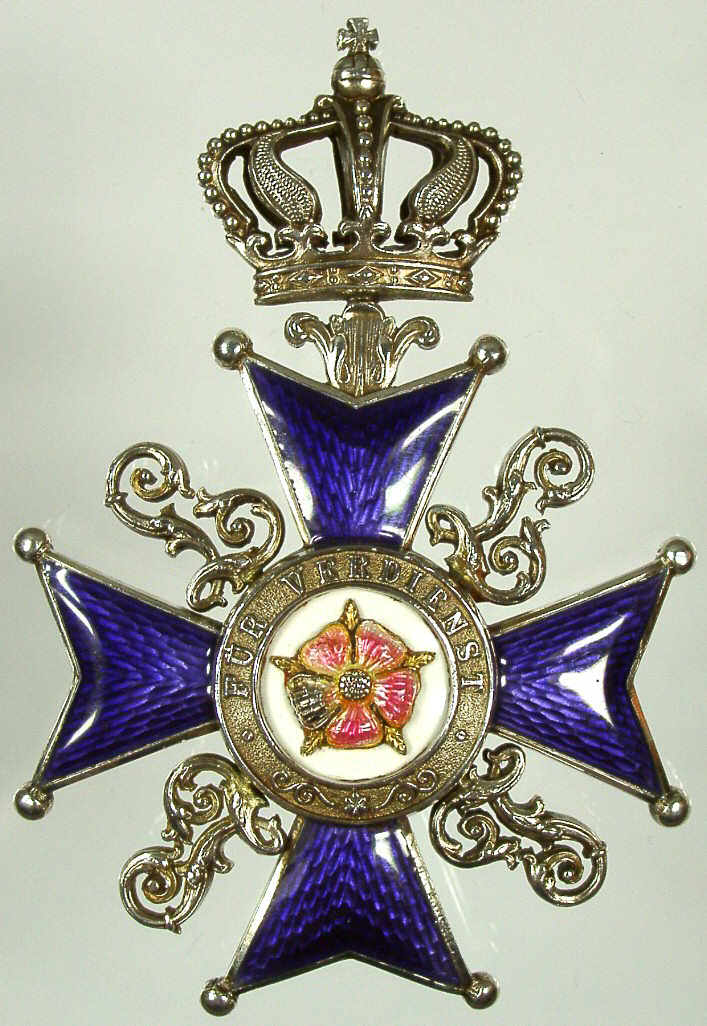

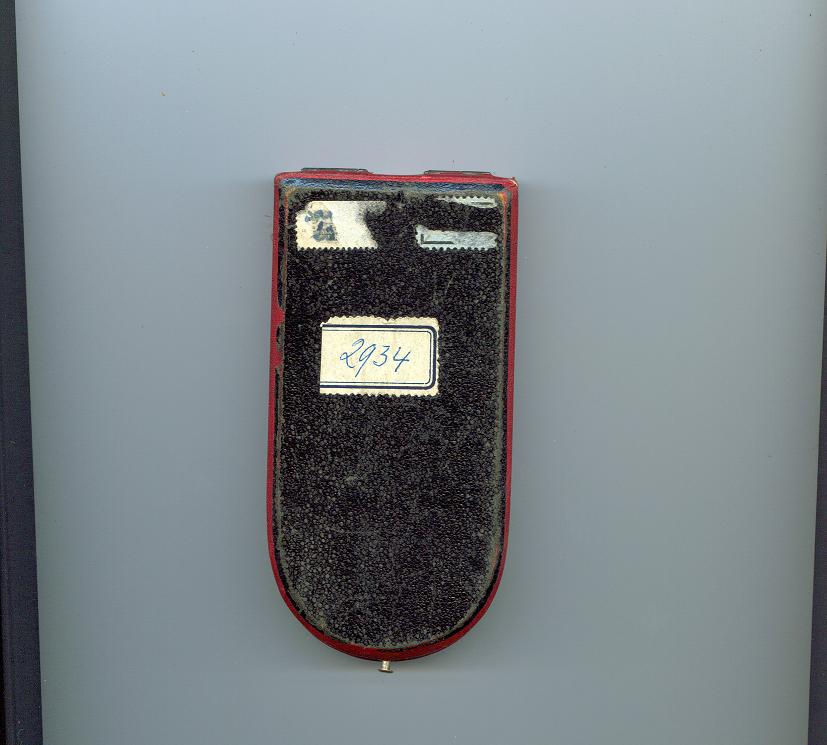

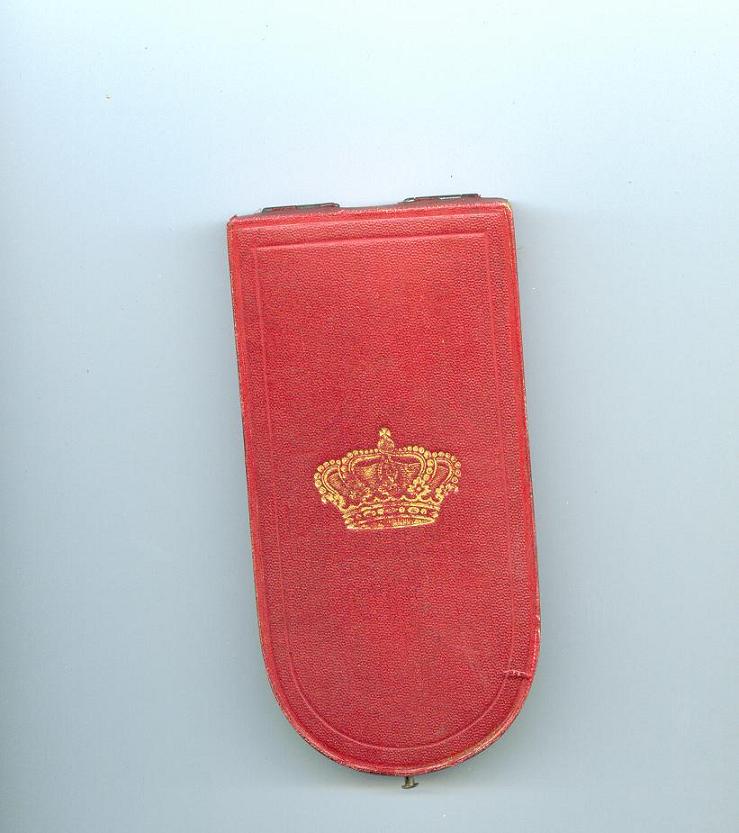
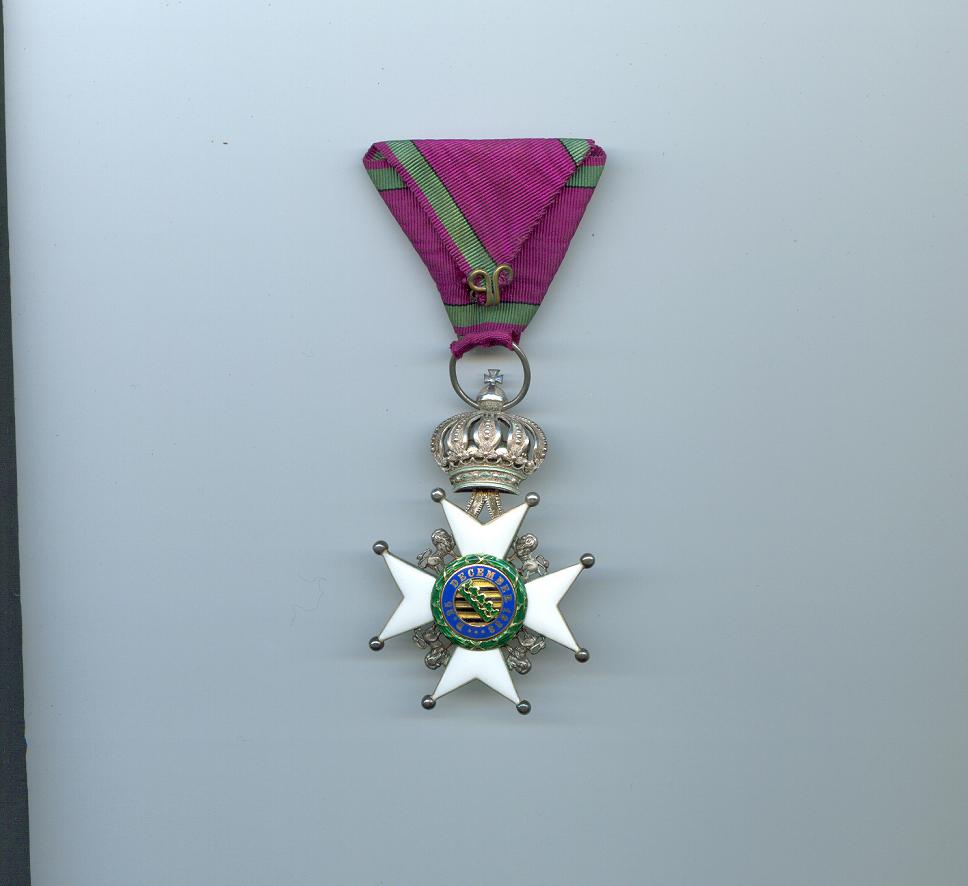
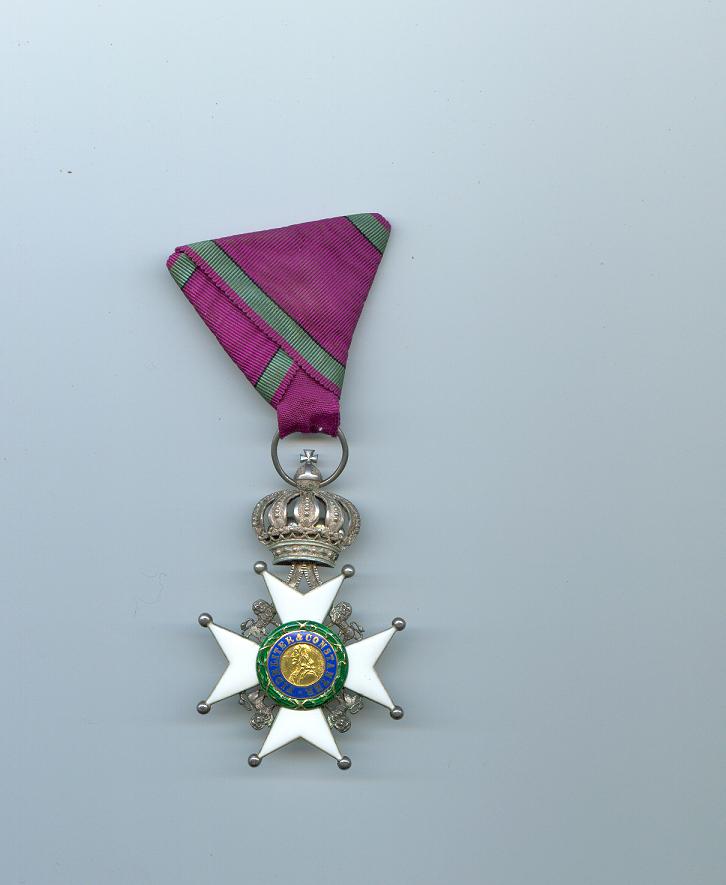
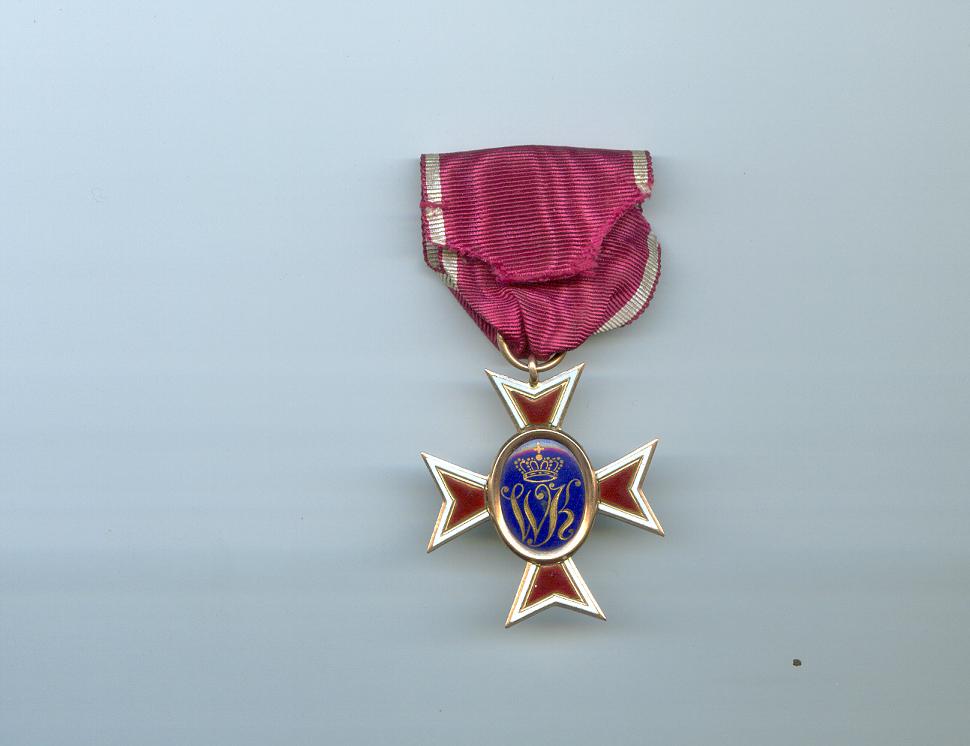

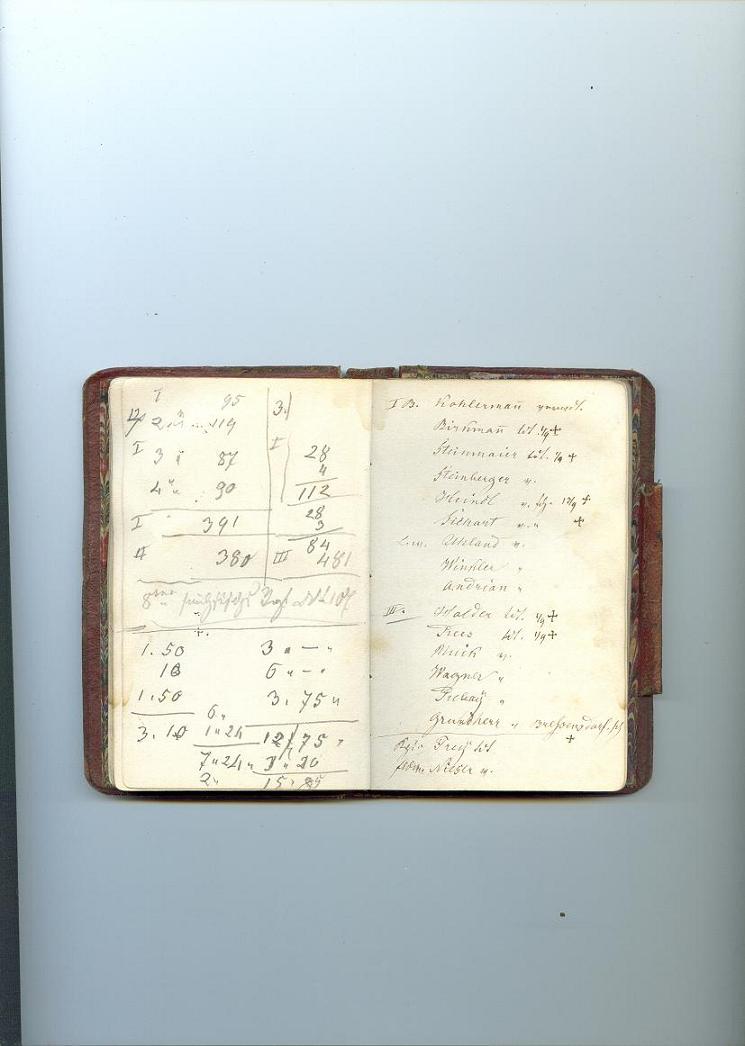
Bavarian MVO 4th Class
in Germany: Imperial: The Orders, Decorations and Medals of The Imperial German States
Posted
Hello Gentlemen
Can anybody tell me if this 4th class MVO is a clean example or it had swds and was removed at a later date. I understand the lower grades are more rare without swds and they can be removed to increase the value. Is there any secret that can be easily identified if this is the case in my situation. I was unaware that this happens till a friend brought this to my attention. I'm hoping somebody can educate me and all others in MVO's
Sincerely
Yankee